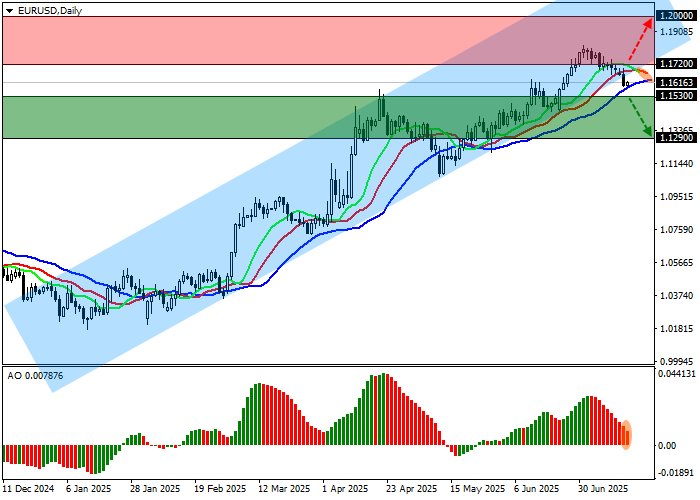Eurozone Data Underscores Economic Recovery
Spain’s June consumer price index showed a sharp uptick, rising from 0.1% to 0.7% month-over-month and from 2.0% to 2.3% year-over-year. While Spain’s print is robust, stability in other key eurozone economies has helped offset the overall regional picture.
In Germany, the influential ZEW Center for European Economic Research reported a significant improvement in July: the current conditions index climbed from –72.0 to –59.5, and the economic sentiment index jumped from 47.5 to 52.7. According to ZEW President Achim Wambach, optimism among survey participants has become more resilient after two months of steady improvement, largely driven by hopes of a resolution to the ongoing US-EU tariff dispute and the possibility of new economic stimulus measures from the German government.
Industrial production across the eurozone posted a notable turnaround in May, swinging from –2.2% to +1.7% on a monthly basis, and accelerating from 0.2% to 3.7% year-over-year—a clear sign of broadening industrial momentum across the bloc.
Dollar Index Fluctuates Amid US CPI Surprise
The US dollar remains volatile, with the DXY index holding at 98.20—its highest since late June. This strength follows the latest US inflation report, which showed a 0.3% rise in June CPI (in line with forecasts) and a jump from 2.4% to 2.7% year-over-year, beating expectations for 2.6%.
As a result, traders have recalibrated their Fed rate cut bets: according to CME’s FedWatch Tool, the probability of a rate cut in September has dropped to 52.5% from 60.8% earlier in the week. This shift in monetary policy expectations has fueled renewed volatility in both the EUR/USD and broader forex markets.
Technical Analysis: EUR/USD Pulls Back in Correction Mode
On the daily chart, EUR USD continues to correct lower, attempting to distance itself from the lower boundary of the ascending channel (1.2100–1.1550). Technical indicators are moderating their bullish signals: the fast EMAs on the Alligator indicator remain above the signal line but are narrowing, while the AO histogram is fading in the buy zone, forming corrective bars.

Key Resistance Levels
- 1.1720
- 1.2000
Key Support Levels
- 1.1530
- 1.1290
Trading Strategies for the Week
- Sell Scenario: Consider short positions if the price breaks and holds below 1.1530, targeting 1.1290. Place a stop-loss at 1.1600. Time horizon: 7 days or more.
- Buy Scenario: Consider long positions if the pair rallies and consolidates above 1.1720, with a target at 1.2000 and stop-loss at 1.1630.
Conclusion: Macro Data to Drive Near-Term EUR/USD Volatility
The interplay between upbeat eurozone macroeconomic data and stronger-than-expected US inflation is likely to keep the EUR/USD pair in a consolidation phase near key support and resistance levels. Future price action will depend on upcoming central bank commentary, further inflation releases, and potential headlines on US-EU trade relations.

